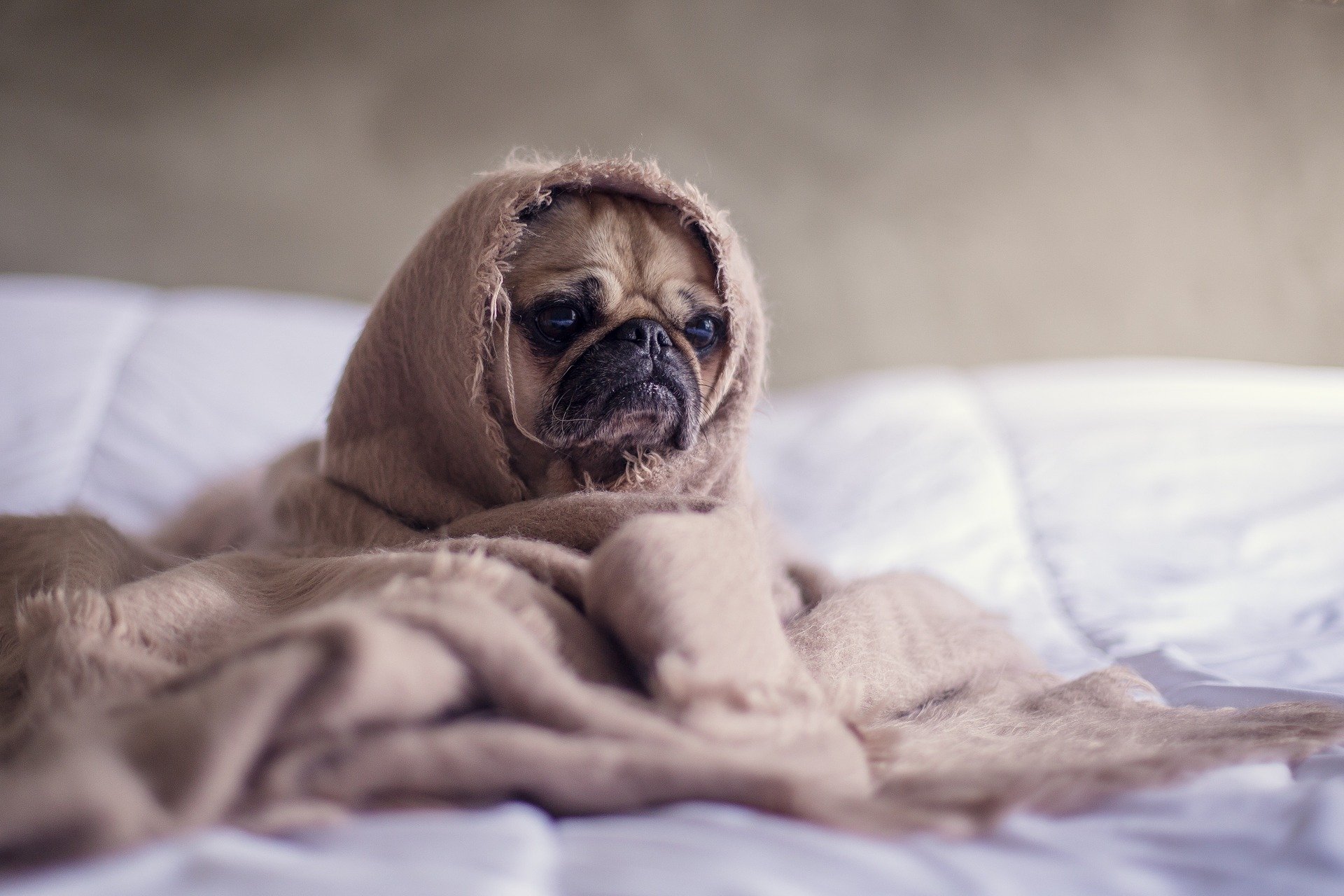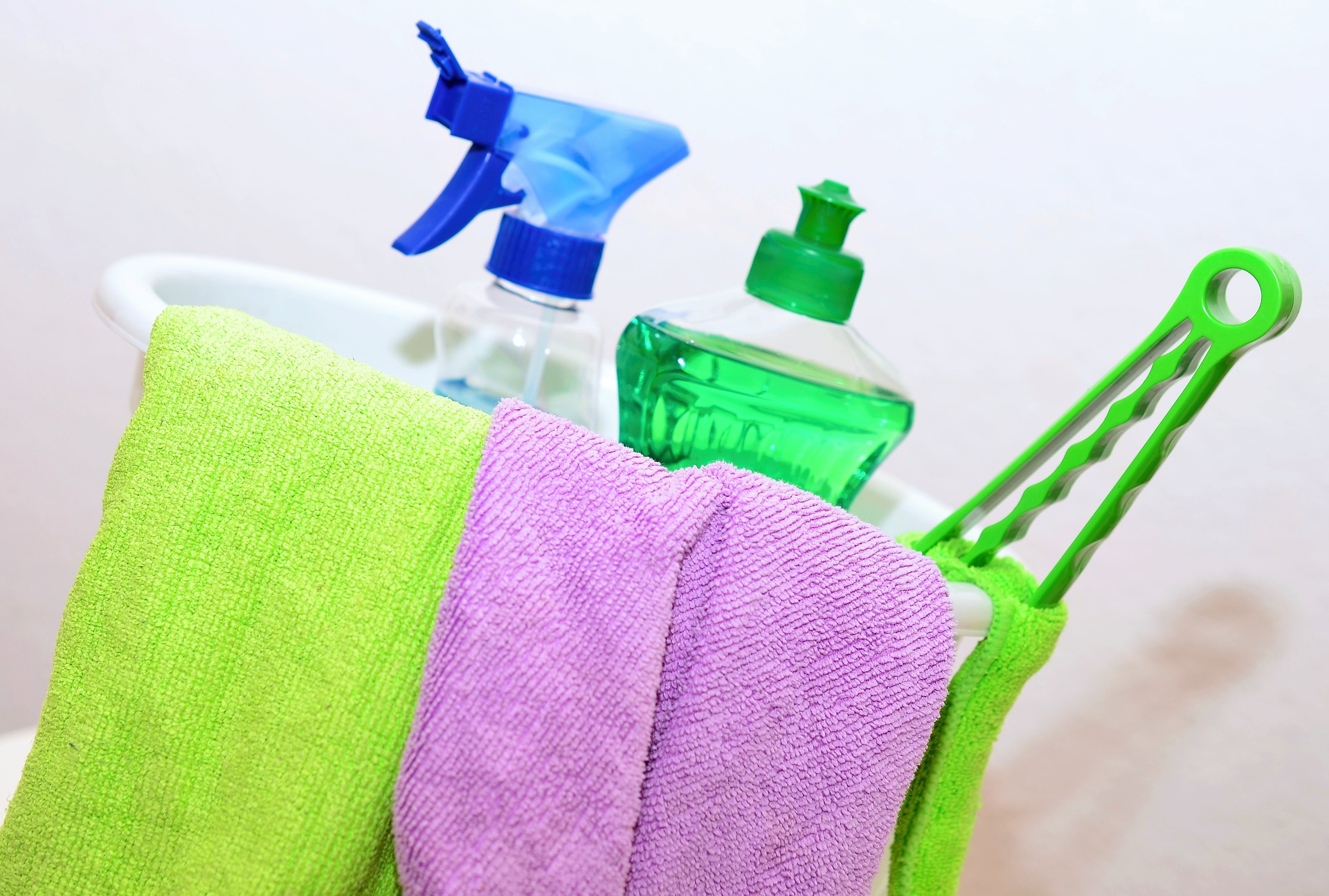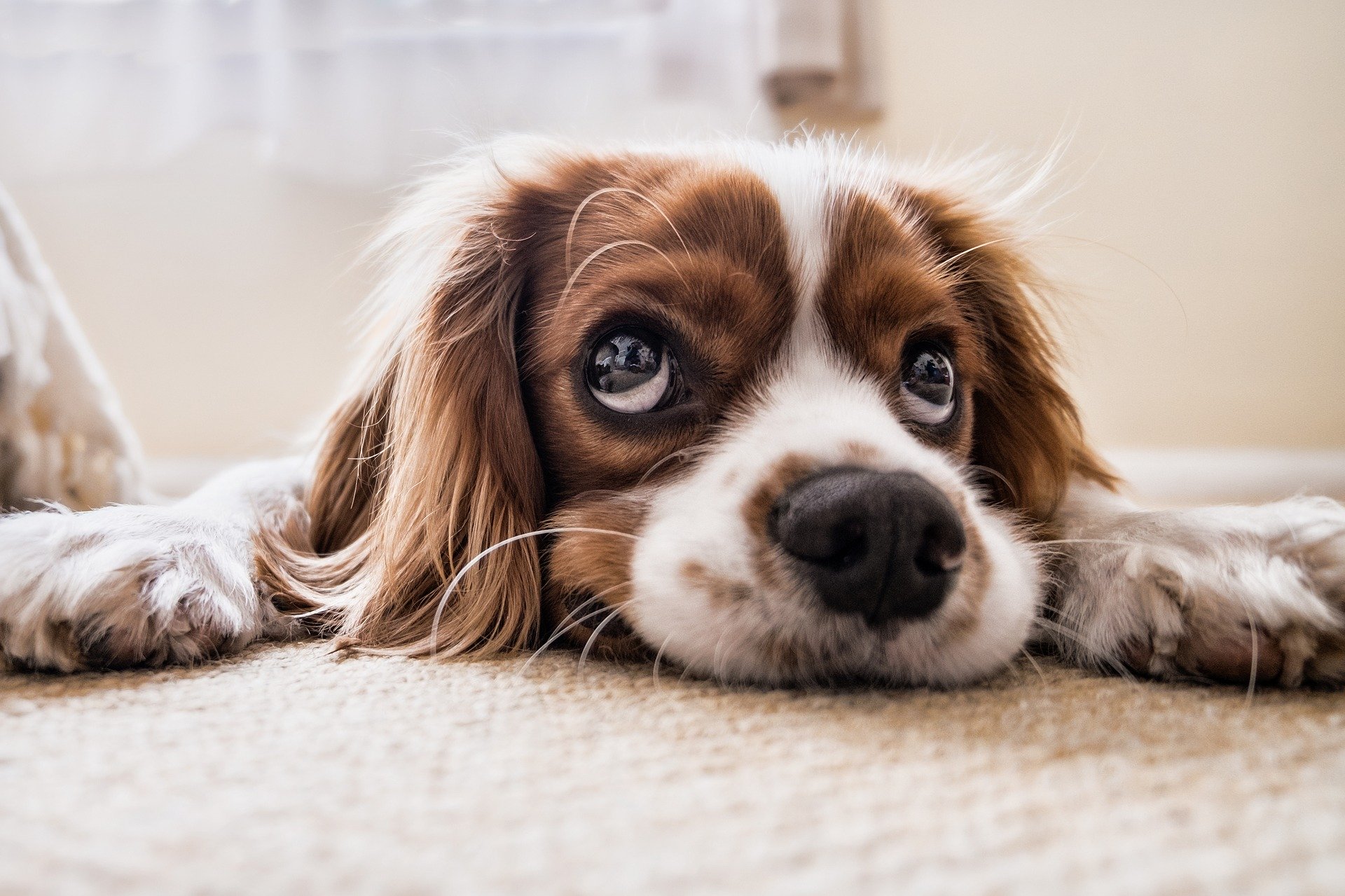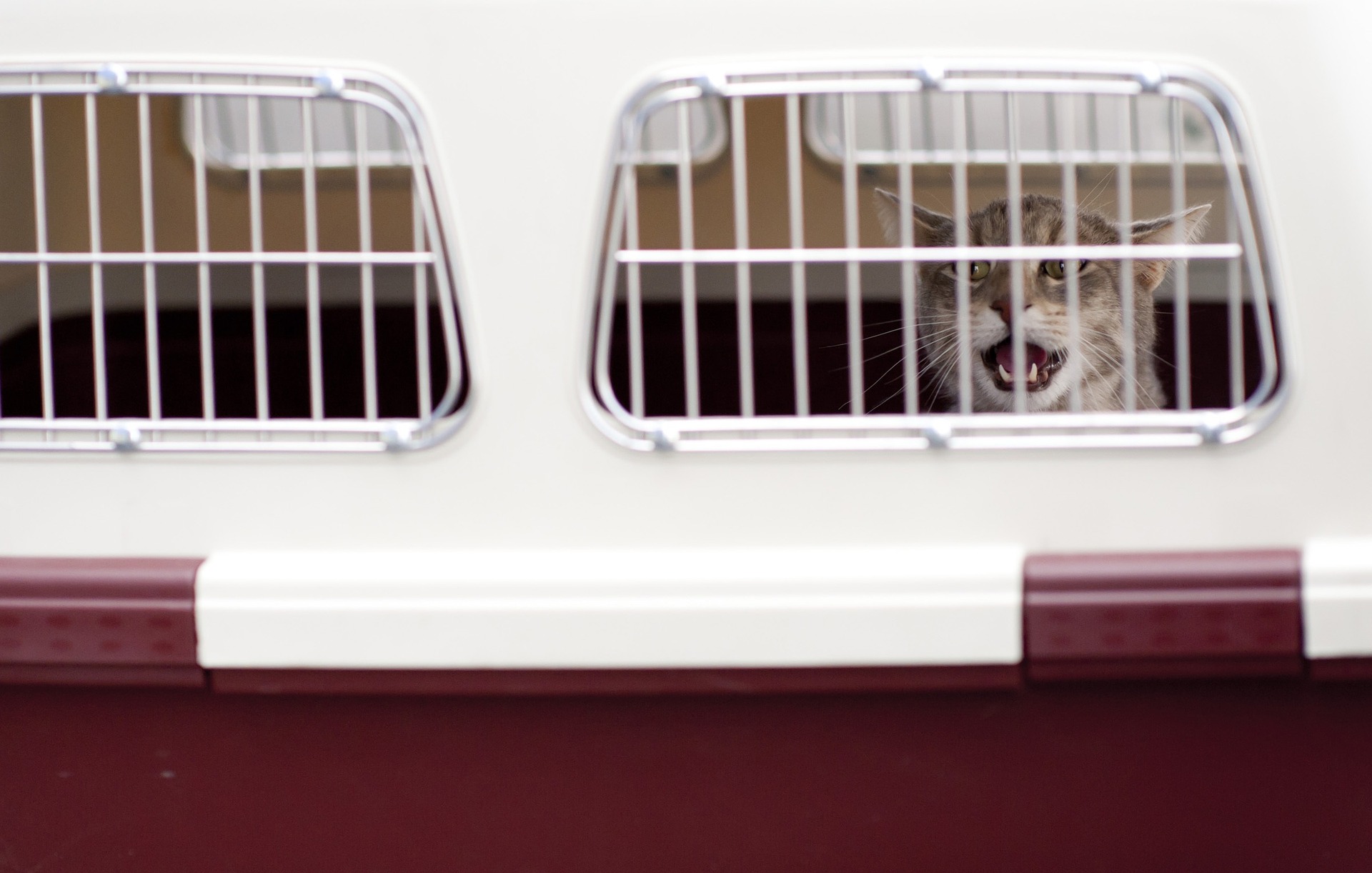Where Do We Start?
We love our furry companions like family, but it can be easy for a smelly problem to get ahead of us once it starts. A small distant corner gets used one day while we’re running late at work, and before long, a bad habit has started right under our noses. Maybe they’re just getting older and can’t go as long as they used to without a bathroom break. It’s easy to start to feel like a lousy owner when the stains and stenches begin to pile up. The truth is there’s always going to be accidents in your pets’ lives. It’s important not to scold the animal for what could be a medical problem or an indicator that something else is wrong. Don’t look at the mess as the problem, but see it as a preventable part of something greater that needs to be addressed.
Know Your Pet
At a certain point, all animals must go. Depending on the weight and the breed, some dogs can go longer than others. Identifying and establishing a schedule that works for both you and the animal is going to be vital in achieving any long term results. Cats can be a little easier with the use of litter boxes, but there are still times where they might use a piece of furniture if something is disagreeable with the litter box (it needs to be cleaned). You might have to limit water intake while you’re out of the house, or even use one of the pet sitting services that will come to your home and take your animal out for 30 minutes or an hour. Generally, if a dog is crate trained, they will only go in their crate as a last resort, and if this is happening, it could be a good indicator that they’re being left alone too long.
Creatures of Habit
If the animal is unfixed and marking, you may have to consider surgery if they don’t stop on their own. Marking can also be a sign of anxiety if another animal, new roommate, or partner has been introduced to their space. In the case of the latter, make sure the animal gets acquainted with the new person and is comfortable with them. The longer they have the habit before being neutered, the harder it is going to be to break. Some animals never stop, but that’s only after being left to their own devices for extended periods. Rubbing their nose in it or other punishments really don’t have an effect on their behavior. Whether it’s marking or just going inside the house, there’s going to be root causes to the act.
Locate The Source
Finding the smell isn’t going to be hard, but for the case of smaller breeds, sometimes a black light is necessary to pinpoint exactly where the animal is going. You might have an idea of what room they’re going in, but not exactly sure where. Once the trouble spot has been identified, you’re going to want to prevent unsupervised access if at all possible. It might even be a good idea to play with the dog in that particular part of the house to make them feel more like it’s part of their home and not somewhere to be peed on.
Potty Training
This is one of the most challenging parts of pet parenthood. Starting with a young animal and teaching them where and where not to go can be a frustrating experience. Cat owners get the benefit of their natural drive to bury their business. Dog owners have to be more diligent, and more importantly, consistent. You cannot discipline an animal into going to the bathroom where and when you want it to. It simply won’t connect in their young little heads. Positive reinforcement and consistency have been shown time and time again to be a much more effective approach to teaching them these good habits.
Crate Training
Crate training is so popular not only because it keeps the levels of teething destruction down, but also because it’s one of the most effective ways to potty train a puppy. As we mentioned previously, dogs generally will not go where they sleep. It’s the primary instinct that we need to draw on to develop more good habits. If you have a young dog, start by outfitting his crate with a soft blanket, a toy or two, and your presence in the room. You want them to become comfortable in their new home and make them feel like they’re still apart of the action even if they are confined.
Build a Routine
Every hour or two, in the beginning, at least, you’ll want to take the puppy out on a leash to use the restroom. If they don’t go, then simply return them to the crate. If they do go, shower them with praise, even a treat, and then return them to the crate. This may seem a little cold for such a young puppy, but you’ll grow much closer if you don’t have the stress of cleaning up messes inside the house constantly. They should be able to go for an hour or two at first. If they can’t last that long, you need to take a look at how much water you’re giving them or if there’s a potential medical issue.
Once you can count on no accidents going every few hours, stretch it out a little longer until you get to the 8-hour mark. They may not be able to hit this point for several months, but if you’re consistent even if they have an accident, it shouldn’t break their routine. Establishing good routines is the most critical part of training puppies and will make your life easier in the long run. Getting up at the crack of dawn every day to let the little guy isn’t always on the top of everyones’ list, but it’s way better than living in a smelly home or possibly resenting your pet for the next decade or so.
Where To Start Deodorizing?
Start With Your Pet
A great place to start deodorizing is at the source; your critter and their bed! It doesn’t matter how much you clean if your animal is stinky. There are just way too many dog shampoos out there to compare and contrast, and lots of them do work well, but for those in a pinch, even Dawn will do for the occasional bath. Your local vet or groomer will always have good suggestions if you ask. Showers aren’t easy with some animals, even downright impossible with others. If an outright bath is out of the question, there are pet wipes that will allow you to give the animal a sponge-bath of sorts. It’s certainly better than nothing.
Your Pet’s Belongings Too
Bedding and crates should be given a good wash with some soap and water, and maybe some other sprays that we’ll talk about later in the case of terrible areas. If a blanket has been thoroughly soiled, it might be time to get a new one, but a good spin through the wash can bring a lot of linens back.
 Image by Free-Photos from Pixabay
Image by Free-Photos from Pixabay
You might have to give it a once-over with the lint roller depending on what kind of breed you have. Shed control is going to be an ongoing struggle for all animal owners, but regular brushing and bathing will keep this to a minimum. For our cat owners, this would be a great time not just to change the litter box, but give it a good cleaning as well.
Their toys, leashes, collars, and anything else can be given a good soak in some soapy water or even put through the washing machine potentially. Don’t be afraid to throw things out. There’s no end to the effort you can waste on trying to resurrect what is effectively a rag or chew toy. The point is to minimize the potential smell culprits. Once we know the smell isn’t our pet or their crate, we can hone in on other sources.
Ways To getting Rid Of The Smell
Once you’ve located the smelly area, there’s going to be an evaluation of materials and the staining intensity. Non-porous surfaces like tile and most finished woods probably only need a wipe with some common disinfectant if the stain is recent and light. Then again, you probably wouldn’t need this guide if that was the extent of the problem.
 Image by congerdesign from Pixabay
Image by congerdesign from Pixabay
Which Cleaners Are The Most Effective?
There are a few options when it comes to what cleaner is used. Vinegar and water in equal parts is a cheap and powerful deodorizer that can be found in most homes. It works better if applied quickly after the mess is made. It must be mentioned that some animals don’t react well to strong chemical smells, and if the vinegar solution isn’t dried completely can leave a faint odor that might attract the pet back to the spot for another go. Generally, with small spots, this isn’t an issue, and if you’re dealing with large areas, you’re going to need more than vinegar. Another tool you need to stay away from is steamers. For textiles and upholstery, the heat will bond the animal protein to the fabric, preventing you from ever getting the smell out.
For Small Accidents
For most small messes, dry up what you can with paper towels and then apply your vinegar solution or cleaner to the area. Let soak for ten minutes and then dab up with more paper towels or hand towels. When dealing with urine in carpets and other textiles, you never want to make a rubbing motion or try to scrub the fibers, instead press firmly with dry towels and watch as the moisture gets pulled out. Once the area has dried, you can dust on some baking soda and vacuum. This vinegar and baking soda combo is a robust approach to most carpet and textile stains, but sometimes you’re going to need to bring in some bigger guns, the enzyme cleaners.
Vinegar on its own is an enzymatic cleaner, though it’s not as powerful as some of the commercial sprays on the market. These products will be readily advertised as pet stain and odor control and are more or less effective depending on the specific brand. They are all considered natural cleaners, as they contain no major or harsh chemicals. They do contain enzymes that can specifically target the biological parts (the stinky parts) of urine and break those down. If you’ve been having trouble with pet stains in the past, you probably have a bottle of one of these cleaners. Once the area has dried, you can dust on some baking soda and vacuum.
For Big Accidents
For the solids, let’s hope they’re really solid. Number 2 can be a lot easier to clean if the consistency of the stool isn’t too soft. You still want to follow the ‘no scrubbing rule’ until you’ve gotten up every bit of particulate matter than you can. Otherwise, you’re just making the problem worse. You’ll want to prevent this problem altogether by making sure your puppy is eating properly. The right diet should prevent most diarrhea situations from ever occurring. That’s why it’s important not to feed your puppy a lot of strange and new human food, regardless of how tempted you may be.
Also, it’s a good idea to use bedding made out of a material that can be washed again and again at high temperatures. White might seem like a bad idea for bedding, but bleaching is easy and effective. Some don’t care for the odor or the potential damage to their other clothes, but there’s a balance of chemical versus ritual that can keep any home in decent shape. There are also enzyme-based laundry additives that can be added to any detergent. At the end of the day, a bottle of enzyme spray, some warm water, and a little diligence will go a long way in preventing future smells.
Carpets are unfortunately susceptible to urine damage because if it’s not cleaned immediately, liquids flow into the pad. You really can’t soak it back out once it gets that deep. Professional cleaners might be a last-dash effort to rejuvenate some stinky carpet, but more than likely it’s going to need to be replaced along with the pad underneath.
Air quality
A Breath of Fresh Air
Airing out space is the first step in managing any odor. The smell has to go somewhere. Open two windows at either end of the house to create airflow. Often, you’ll find that after a few hours of fresh air, the scent is already dramatically better. While this helps for the immediate future, the actual scent producers aren’t going away without a little more effort. You still might come to a point where no amount of cleaning can 100% remove that lingering smell. This is where air fresheners, scented candles, and diffusers can come in handy.
Air Filters
When looking at air filters, it’s crucial to know that HEPA filters are not for smells. They will help for dander and hair in the air, which ultimately might subtly help the scent, but if an air filter doesn’t contain an activated carbon filter, it’s not going to do a lot for the smell. These are not cheap solutions, either. Filters designed for smaller rooms will quickly run you over $100. The larger systems can run closer to 4 digits and beyond.
Air fresheners and purifiers are ultimately bandaids, but with faint lingering scents, it might make the difference between tolerable and not.
Smell That Has Gone Too Far
With that being said, what do we do with the horrible smells?
It’s happened to all of us at some point. We walk in somewhere and get hit in the face with an immense animal odor. Even after the animals and their owners are long gone, the stench lasts and lasts. It is because of the way those stinky biological agents get down into materials and stay there. If you don’t deal with the stains properly when they happen, they build up on top of each other.
There comes a point when no amount of cleaning is going to pull all that compounded biological matter back out of the porous surface. Even stone surfaces, concrete, and other non-porous surfaces can eventually become stained if left for long enough. But wood, carpet, and laminate subfloors can be ruined much quicker. Animal urine does have a slightly caustic nature to it due to the ammonia content, so even protected wood products like furniture will eventually yield if not properly controlled.
A Little DIY Can Yield Big Results
Trim and low-lying window sills are prime targets for this kind of damage, but the good news is they are the easiest to repair or replace. Sanding is a surefire way to make sure the damage is removed, but you might find it going deeper than you hoped to get all that gunk out of the grain. Wood filler is easy to apply to squared trim pieces, and you can cut out larger pieces for repair, but rounded and intricate trim is more than likely just going to have to be replaced.
Trim and even drywall can be patched and replaced if the damage isn’t too widespread. It often comes down to the amount of time it’s been there to determine whether or not it needs replacement. What can appear to be a widespread and really pungent mess in the case of a marking situation can usually be wiped away if it hasn’t been left to sit for too long.
… Or Maybe Not
Only in the most extreme situations where hoarding or animal overpopulation was an issue over long periods do you see the terrible structural damage. In the most severe cases, entire subfloors and floor joists have to be ripped out.
If you find yourself with a smelly subfloor, there are cheaper solutions in the form of odor-blocking paints and seals, but these products have mixed results depending on the space. They have been reported to help in some situations dramatically, but if you find yourself sealing the subfloor, you’re not far off from just replacing it. Not everyone is comfortable with that level of carpentry, but maybe find a friend, watch a Youtube tutorial, and you’ll have that stink out in no time.
Hopefully, you never find yourself in this situation, but rest assured that everything can be remedied with a little elbow grease and some enzymatic cleaners… and maybe a new floor joist or two.
Also, discover Essential Cleaning Tools Every Pet Owner Should Have





[…] important part of pet ownership is maintaining pet hygiene. Regular bathing and grooming is a healthy habit in general, but you may not know that it can also […]
… [Trackback]
[…] Find More Information here to that Topic: beycome.com/blog/how-to-get-rid-of-pet-smell-at-home/ […]
… [Trackback]
[…] Information to that Topic: beycome.com/blog/how-to-get-rid-of-pet-smell-at-home/ […]
… [Trackback]
[…] There you will find 78967 more Info on that Topic: beycome.com/blog/how-to-get-rid-of-pet-smell-at-home/ […]
… [Trackback]
[…] Here you will find 30675 additional Information to that Topic: beycome.com/blog/how-to-get-rid-of-pet-smell-at-home/ […]
… [Trackback]
[…] Read More Information here on that Topic: beycome.com/blog/how-to-get-rid-of-pet-smell-at-home/ […]
… [Trackback]
[…] Info to that Topic: beycome.com/blog/how-to-get-rid-of-pet-smell-at-home/ […]
… [Trackback]
[…] Read More Info here on that Topic: beycome.com/blog/how-to-get-rid-of-pet-smell-at-home/ […]
… [Trackback]
[…] Information on that Topic: beycome.com/blog/how-to-get-rid-of-pet-smell-at-home/ […]
… [Trackback]
[…] Find More here on that Topic: beycome.com/blog/how-to-get-rid-of-pet-smell-at-home/ […]
… [Trackback]
[…] Find More on that Topic: beycome.com/blog/how-to-get-rid-of-pet-smell-at-home/ […]
… [Trackback]
[…] Information on that Topic: beycome.com/blog/how-to-get-rid-of-pet-smell-at-home/ […]
… [Trackback]
[…] Info to that Topic: beycome.com/blog/how-to-get-rid-of-pet-smell-at-home/ […]
… [Trackback]
[…] Find More here to that Topic: beycome.com/blog/how-to-get-rid-of-pet-smell-at-home/ […]
… [Trackback]
[…] Find More on on that Topic: beycome.com/blog/how-to-get-rid-of-pet-smell-at-home/ […]
… [Trackback]
[…] Read More Information here on that Topic: beycome.com/blog/how-to-get-rid-of-pet-smell-at-home/ […]
… [Trackback]
[…] Info on that Topic: beycome.com/blog/how-to-get-rid-of-pet-smell-at-home/ […]
… [Trackback]
[…] Info to that Topic: beycome.com/blog/how-to-get-rid-of-pet-smell-at-home/ […]
… [Trackback]
[…] Info on that Topic: beycome.com/blog/how-to-get-rid-of-pet-smell-at-home/ […]